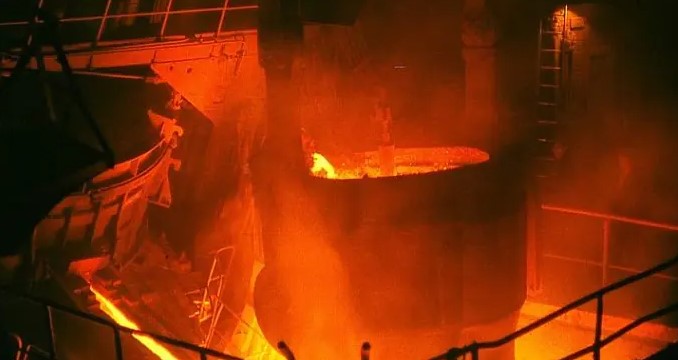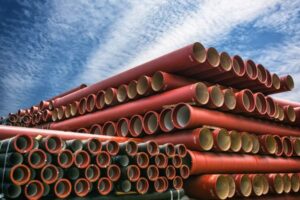
Blast furnaces are of key importance to iron- and steel-making, especially in countries such as China, which dominates the global manufacture of steel. From great heights, it extracts iron from its ore through intense heat, a very basic process in manufacturing different steel products used in construction, manufacturing, and energy sectors. Entailed in the working principle of a blast furnace is actually the very basic infrastructure of modern, industrialised society.
The following article deals with basic components and functions of blast furnaces, Chinese-specific developments of blast furnace operations, and the role that country holds in the global market. That will help us analyse Chinese blast furnace technological innovations, efficiency improvements, and environmentally friendly considerations for a clearer picture of their impact. It will be seeking to provide an elaborate, simplified insight into how these industrial giants operate and their importance, showcasing them as crucial parts within both the national and global contexts.
What is a Blast Furnace?
Definition
A blast furnace is a towering industrial structure used to extract iron from its ore. This process involves using high temperatures to melt the raw materials, which include iron ore, coke, and limestone. The furnace operates continuously, with these materials added in layers at the top. Inside, a series of chemical reactions occur as hot air is blasted through tuyères (nozzles), igniting the coke. Therefore, this combustion produces carbon monoxide, which reacts with the iron ore to form molten iron.
The molten iron collects at the bottom of the furnace and is periodically removed, or tapped, for further processing into steel. The limestone helps remove impurities, forming a byproduct called slag. Blast furnaces are essential in producing the vast quantities of iron needed for the China metal industry, which in turn supports construction, manufacturing, and various other sectors. Additionally, their efficiency and capacity make them a cornerstone of modern industrial operations.
Historical Background
- Early Use: Blast furnaces date back to ancient times. Additionally, people used them to create tools and weapons.
- Development: Over the centuries, blast furnaces have become more sophisticated. Consequently, modern furnaces can produce thousands of tons of iron each day.
Key Components
- Hearth: Furthermore, this is the bottom part of the furnace where molten iron collects.
- Tuyères: These are nozzles that inject hot air into the furnace, increasing the temperature.
- Stack: Consequently, this tall structure holds the raw materials as they move down through the furnace.
The Process Inside a Blast Furnace
Raw Materials
The main ingredients in a blast furnace are:
- Iron Ore: This is the primary source of iron.
- Coke: This is a type of carbon that helps to heat the furnace and reduce the iron ore to iron.
- Limestone: Consequently, this helps to remove impurities from the iron ore.
Loading the Furnace
- Layering: Workers add the raw materials in layers inside the furnace.
- Continuous Feeding: The furnace operates continuously, so new materials are added regularly to keep the process going.
Chemical Reactions
Inside the furnace, several key reactions take place:
- Combustion: Coke burns with the hot air, producing carbon dioxide and heat.
- Reduction: Therefore, the heat causes the carbon dioxide to react with more coke, creating carbon monoxide.
- Iron Production: The carbon monoxide reacts with the iron ore, producing molten iron and carbon dioxide.
Molten Iron Production
- Collection: The molten iron collects at the bottom of the furnace.
- Tapping: Workers periodically tap the furnace to remove the molten iron and slag, which are byproducts of the process.
Chinese Blast Furnaces: Unique Aspects
Technological Advancements
Chinese blast furnaces have seen many technological improvements. Thus, some key advancements include:
- Automation: Modern furnaces use advanced control systems to optimise the process.
- Efficiency: Thus, innovations have made Chinese blast furnaces some of the most efficient in the world.
Scale and Efficiency
- Large Scale Operations: China operates some of the largest blast furnaces globally.
- High Efficiency: Furthermore, these furnaces can produce more iron with less energy and fewer raw materials.
Environmental Considerations
- Emission Controls: China has implemented strict emission controls to reduce pollution from blast furnaces.
- Waste Recycling: Many Chinese blast furnaces recycle waste products to minimise their environmental impact.
Chinese blast furnaces play a crucial role in the global steel industry. Their advancements and efficiency set them apart from others around the world. Understanding how these furnaces work gives us a glimpse into the heart of industrial production.
The Importance of Blast Furnaces in China
Industrial Role
including construction, manufacturing, and energy. In construction, steel from blast furnaces is used in infrastructure projects such as bridges and buildings. In manufacturing, it is vital for producing automobiles and appliances. The energy sector relies on steel for power plants and renewable energy infrastructure like wind turbines. These furnaces ensure a steady supply of steel, driving industrial growth and supporting the development of critical infrastructure, thus playing a pivotal role in China’s rapid industrialization and modernization.So, these sectors include:
- Construction: Steel from blast furnaces is essential for building infrastructure, such as bridges and skyscrapers.
- Manufacturing: The automotive and appliance industries rely heavily on steel.
- Energy: Steel is used in the construction of power plants and wind turbines.
Without blast furnaces, these industries would struggle to meet their steel needs.
Economic Impact
Blast furnaces significantly boost China’s economy by underpinning the steel industry, which provides millions of jobs. These include direct employment in steel plants and indirect jobs in sectors like mining and transportation. The steel produced supports vital industries such as construction, manufacturing, and energy, fueling further economic activity. Additionally, the steel industry contributes substantially to China’s GDP. By supplying both domestic needs and international markets, Chinese blast furnaces help maintain economic stability and growth. So, their efficiency and production capacity ensure that China remains competitive in the global steel market, reinforcing its economic strength and industrial leadership.
These jobs include:
- Direct Employment: Jobs within the steel plants themselves.
- Indirect Employment: Jobs in related sectors, such as mining and transportation.
Additionally, the China metal industry boosts the GDP. It supports other industries by providing necessary materials. In addition, this interconnectedness strengthens the overall economy.
Global Influence
China’s blast furnaces have a significant global influence on the steel industry. They produce a large portion of the world’s steel, making China a major exporter. This large-scale production helps keep global steel prices competitive. Technological advancements and efficiency improvements in Chinese blast furnaces set industry standards, influencing practices worldwide. Moreover, China’s focus on reducing environmental impact through emission controls and waste recycling showcases a commitment to sustainable industrial practices. Consequently, China’s blast furnaces not only support its own economic growth but also play a pivotal role in shaping the global steel market and industrial innovations.
Some points to consider are:
- Export: China exports a large amount of steel to other countries. This makes it a key player in the global market.
- Pricing: The scale and efficiency of Chinese blast furnaces help keep steel prices competitive.
- Innovation: In addition, technological advancements in Chinese blast furnaces influence practices worldwide.
China’s role in the global steel industry is pivotal. Additionally, its advancements and production capacity set trends that other countries follow.
Bottom Line
Overall, Chinese blast furnaces are vital to both the national and global steel industries. Their sophisticated technology, high efficiency, and environmental considerations set them apart. They not only supply essential materials to various sectors within China but also significantly influence global steel markets through exports and innovation. Understanding the role and operation of these furnaces reveals their importance in our modern world. They support countless jobs and contribute greatly to the economy.
Moreover, their advancements in reducing environmental impact showcase a commitment to sustainable industrial practices. By appreciating the complexity and significance of blast furnaces, we can better understand the foundation of many aspects of our daily lives.
Also Check: Challenges and Opportunities in China’s Steel Market
Name: Mysteel Global
Address: 350 Fifth Avenue, NewYork City, NewYork, USA, 10118
Phone: +65 66538229



